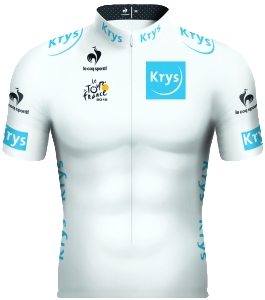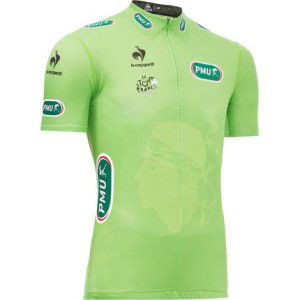

4 July marks the start of the 2015 Tour de France, which is the 102 edition of the race. The race will finish in Paris, as is customary on the Champs-Élysées on 26 July. The tour will cover a total of 3360.3 kms over 21 stages (It’s 303 kms shorter than the 2014 Tour). As is customary, there will be 2 rest days, after stages 9 and 16 respectively.
Watch What’s Trending Now!

ADVERTISEMENT
4 Stages, including the Grand Depart will be held in the Netherlands. It’s the 6 time Netherlands hosts the start of the Tour, which is the most for any country that does not have a direct border with France. The Tour Includes
- 9 flat stages
- 3 hilly stages
- 7 mountain stages including 5 summit finishes
- 1 individual time trial
- 1 team time trial
ADVERTISEMENT
Stage 1 will be an individual time trial of 13.8kms. Stage 2 will be in Netherlands as well, before Stage 3 heads to Belgium. While it should not pose too much of a challenge, Stage 3 has a summit finish on Category 3 hill, Mur de Huy. Stage 4, which starts in Belgium and will finish in France is the longest stage of the Tour at 223.5 kms, with 7 cobblestone sections scattered through stage 4, this would be one of the most challenging stages to negotiate.
Stages 6 and 8 will have uphill finishes which could favour some of the adventurous riders to gain some time on the Peleton. Stages 5 and 6 are simple plain stages, which would favour sprint finishes. Stage 9 is a Team Time Trial for 28 kms before heading into the first rest day.
ADVERTISEMENT
Stages 10, 11, 12 are in Pyrenees Mountains and this is where the GC category favorites will start to make their moves. There are high gradient climbs in these stages where some of the riders, might lose pace. Stage 13, despite being classified as a medium mountain stage, have 2 serious climbs, before a fast decent finish. If someone does want to go down at break-neck speed, they might be able to pull out 10-12 seconds on their rivals. Contador did this in the Route du Sud prior to the Tour. 14, 15 and 16 are transiting days to the Alps with a few category 2 climbs in them. The second rest day happens after Stage 16 on 21 July as the riders prepare for the Alps

Imago
The Polka Dot Jersey is given to the King of the Mountains. The wearer of the jersey has secured the most points for climbing categorized points through out the tour.
Stages 17-20 are in the Alps. This is where the top General Classification favorites are going to battle it out. This is where the Tour will be won. These 4 stages are littered with Category 2, 1 and Hors catégorie (it’s a term used to describe a tougher than Category 1 climb). There is just a single Category 3 climb. Stage 20 features two Hors catégorie climbs, including one just before the finish, which is where the Tour will be won (Yellow, General Classification and White, Young Riders Classification and the Polka Dot, King of the Mountains).
ADVERTISEMENT

Imago
The General Classification Leader. The wearer of this jersey has the least overall time and is in the lead of the Tour

Imago
It is essentially given on the same lines as the Yellow Jersey, only any rider under the age of 25 is eligible for it.
Stage 21, as is tradition will the Tour de France, will have no attack on the General Classification timings. The only competition that will be up for grabs will be the Green Jersey (Points Classification). The stage ends with a finish on the Champs-Élysées to conclude the 2015 Tour De France
ADVERTISEMENT

Imago
The final stage of the 2015 will be in Paris on the Champs-Élysées
There are some changes to the rules in this edition.
The top 3 finishers from stages 2 to 8 will get bonus times of 10, 6 and 4 seconds respectively. This is not going to be applicable to the time trials that take place. There are changes in the point’s classifications. A win is now worth 50 instead of 45, with other places being awarded more points compared to previous years.
ADVERTISEMENT

Imago
The wearer of the Green Jersey has the most points in the Tour. The Tour aims to make sprint competition more valuable this year
With these rule changes, you might actually see the General Classification favorites trying to get a few seconds in the plain stages, before they prepare for the grueling battles in the Mountains.
ADVERTISEMENT
ADVERTISEMENT
ADVERTISEMENT

